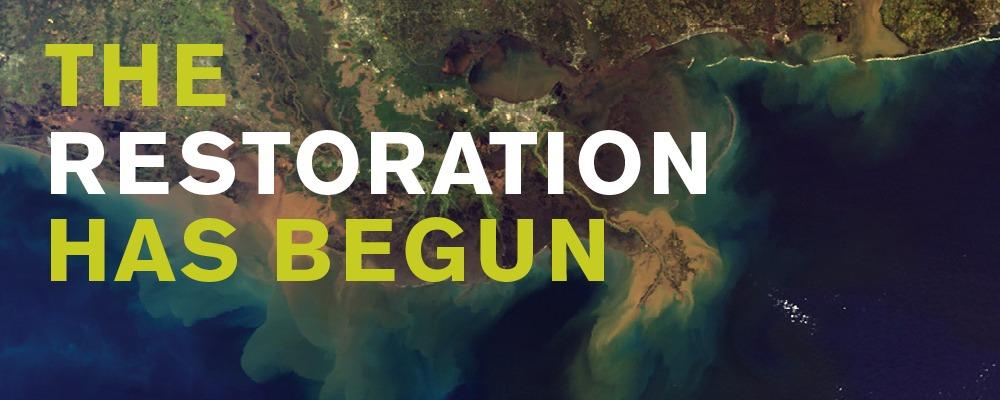
By P.J. Marshall
The Restoration has begun. It’s official.
From the very first speeches on the first day of COP21, landscape-scale restoration was on the global agenda as never before.
Prince Charles was among the first to address the assembled delegates, and was also the first to touch on landscape-scale restoration, elevating it alongside its more commonly discussed cousin, preventing deforestation.
"Given that we have managed to reduce the world's tropical forests so significantly over recent decades (with over 500 million hectares lost since 1950), the restoration of forest landscapes should not be an afterthought - but an equal priority to halting deforestation and degradation," he said.
Then, at the Global Landscapes Forum on Dec. 5 and 6, where more than 3,000 representatives of business and civil society, double the expected attendance, converged to discuss the role landscapes can play in “solutions to the planet’s greatest climate and development challenges,” landscape-scale restoration was the buzz phrase. Described by some as the largest side event at the conference, where there was standing room only, the event saw the CEOs of multinationals including Veolia and Danone discuss their perspective on investing in landscape scale restoration to tackle climate change, global poverty and environmental degradation simultaneously.
At Restore the Earth, we hosted a breakfast on Wednesday Dec. 9, where thought leaders including Hunter Lovins, BSR’s Eric Olson and USBCSD’s Andrew Mangan joined us for a robust discussion on the opportunity for the private sector in leading on restoration.
And finally, there it is, right there in Article 5.1 of the historic global agreement inked in Paris on Saturday night. It reads:
“Parties should take action to conserve and enhance, as appropriate, sinks and reservoirs of greenhouse gases as referred to in Article 4, paragraph 1(d), of the Convention, including forests.”
It’s that “enhance” that is so important to us at Restore the Earth. It signals a new appreciation of the role that landscape restoration can – indeed must – play in our urgent quest to keep the world to within 2 degrees, now 1.5 degrees Celsius, warming.
Of course, shifting our energy economy towards low carbon sources is a huge part of the work that lies ahead. We have to stop putting more carbon into the atmosphere as a matter of the utmost urgency.
But there’s another side that is equally important – and urgent. We also need to rapidly implement strategies to mitigate and sequester the carbon that we’ve already emitted. The path to get there is through landscape-scale restoration – restoring our degraded ecosystems - which can contribute 0.5 degree C of the solution by the end of the century.
At COP21, there was much focus on the challenge that so many of the solutions to hold us to the 1.5 degrees C goal feel hypothetical and untested. Landscape-scale restoration is different. We’ve proven landscape restoration works, on the ground. At Restore the Earth. We’ve already restored 45,000 acres along North America’s Gulf Coast. To get there, we’ve raised more than $29million in funding and collaborated with public and private partners including U.S. Fish & Wildlife, USDA/Natural Resource Conservation Service, Shell, CITGO, Entergy, Wells Fargo and Timberland. We’ve deployed 26,000 volunteers. Today, these reforested areas have restored habitat, created jobs, and brought back the rich green landscape that contributes so much to the Gulf Coast communities and culture. And we’ve been able to prove that this work yields incredible value, creating $9 of value for every $1 invested. So for an estimated cost of purchasing, restoring and permanently conserving degraded land of $5,000 per acre, we can create $45,000 of value.
This is just the start. The need now is to rapidly scale up this work to a more epic level. At REF, our next grand project is to restore North America’s Amazon, 1 million acres of degraded land in the Mississippi Alluvial Valley. If we succeed in this project, it will reduce America’s carbon footprint by fully 2 percent. It will also generate billions in social, environmental and economic value.
The U.N. Convention to Combat Desertification (UNCCD) estimates that we have the potential to restore 2 billion hectares of land globally—an area larger than South America. That’s a huge investment opportunity for leaders with the vision to take it on.
As the old Chinese proverb says, "The best time to plant a tree was 20 years ago. The second best time is now."
So let’s get to work. Join the restoration. It has begun.
Restore the Earth, a registered not-for-profit, works with public- and private-sector partners to restore the Earth’s essential forest and wetland ecosystems. Since Hurricane Katrina in 2008, the organization has secured more than $29 million in public and private funding to reforest more than 45,000 acres along the Gulf Coast. Restore the Earth was also the first to deploy restoration on oil-soiled wetlands after the Deepwater Horizon spill. Currently, Restore the Earth is working to restore 1 million acres of degraded land in the Mississippi River Basin—North America’s Amazon.
TriplePundit has published articles from over 1000 contributors. If you'd like to be a guest author, please get in touch!














